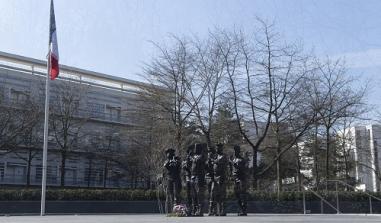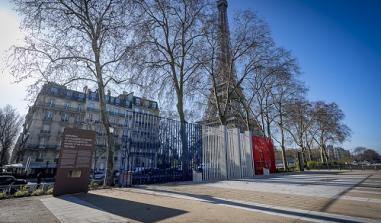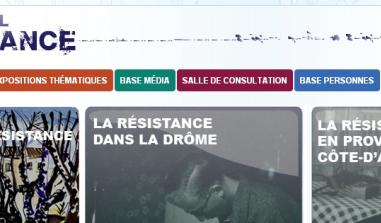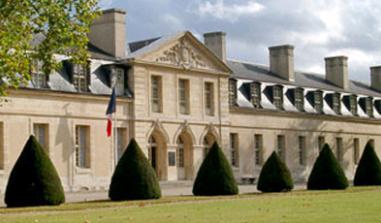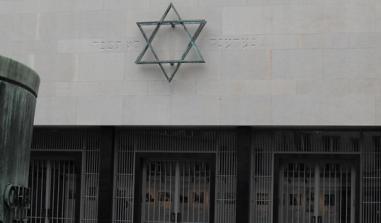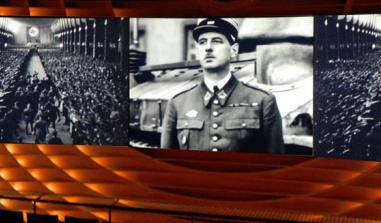The Eiffel Tower
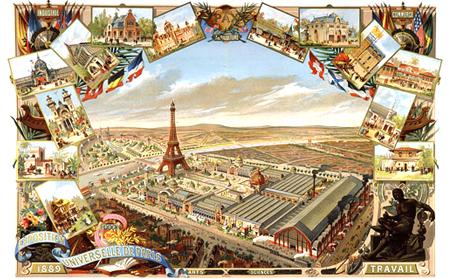
View of the Eiffel Tower. Source : HjalmarGerbig
The Eiffel Tower, the symbol of Paris and a military tool
The project for a tower 300 metres tall was instigated during preparations for the World Exhibition of 1889. The two principal engineers from the Eiffel company, Emile Nouguier and Maurice Koechlin, had the idea in June 1884 for a very tall tower, designed like a large pylon consisting of four lattice-work girders, outspread at the base and coming together at the top, linked together by metal girders placed at regular intervals. On the 18th September 1884 Gustave Eiffel was granted a licence "new authorisation for the construction of metal structures and pylons over 300 metres tall". The curvature of the uprights was determined mathematically in order to provide the best possible resistance to the effects of wind. Erection of the supports began on the 1st July 1887, to be completed twenty-one months later. All the components were prepared at the factory in Levallois-Perret in the Paris suburbs, the head office of the Eiffel company: between 150 and 300 workers were involved in its assembly. The Tower was erected with the aid of wooden scaffolds and small steam driven cranes attached to the Tower itself. The assembly of the first level was carried out using twelve temporary wooden scaffolds 30 metres high and then four large 45 metre scaffolds. Started in January 1887, the project was completed on 31st March 1889. Gustave Eiffel was decorated with the Legion of Honour on the platform at the top.
A showcase for French industrial dynamism at the 1889 World Exhibition, the Tower would see more than two million visitors pass by during the event. Gustave Eiffel saved his work from demolition by promoting research into radio transmissions and suggesting that his tower could be used as an enormous radio mast. After the first radio signals were broadcast by Eugène Ducretet towards the Panthéon in 1898, Eiffel approached the military authorities in 1901 with a view to making the Tower into a long-distance radio antenna. In 1903 a radio connection was made with the military bases around Paris, and then a year later with the East of France. A permanent radio station was installed in the Tower in 1906, thus ensuring its continuing survival. During the Great War, the Tower provided many services by listening to enemy transmissions, which gave it the nickname "the big ear". It is thanks to the Tower that Joffre would be informed of the advance of von Klück's troops and decide to requisition all the taxis in Paris to send soldiers to the Marne. It was responsible, amongst other things, for the arrest of Mata Hari because, once again, the Eiffel Tower had kept an ear out and deciphered the spy's messages. In 1921 the first public radio broadcast in Europe would be transmitted from its aerials. The first television trials from the Tower date from 1925 and the first regular broadcasts from 1935. In May 1940, before the German troops arrived, a handful of patriots carried out acts of sabotage on the Tower, successfully enough to ensure that the lift did not work when Hitler came. A strategic place for commanding the city of Paris, the Tower was closed to the public between 1940 and 1945; it would not reopen until June 1946. Radio broadcasts were made from the centre at Allouis under the control of the occupying authorities, who took control of Radio-Paris. The top of the tower has been modified over the course of the years in order to accommodate ever more antennae. Today it accommodates several dozen antennae of all kinds, including a television mast that is 324 metres tall.
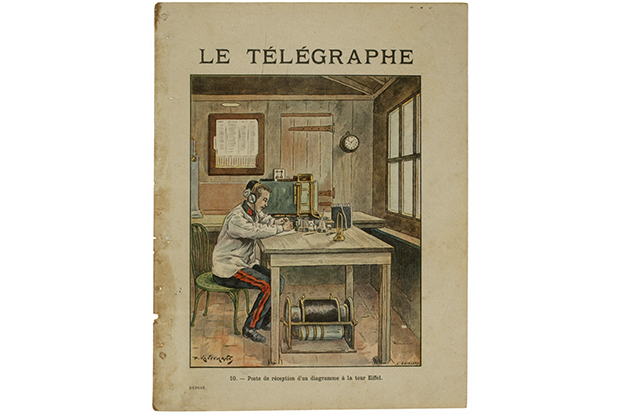
Poste de réception d'un diagramme. ©Réseau Canopé - Musée national de l'Éducation
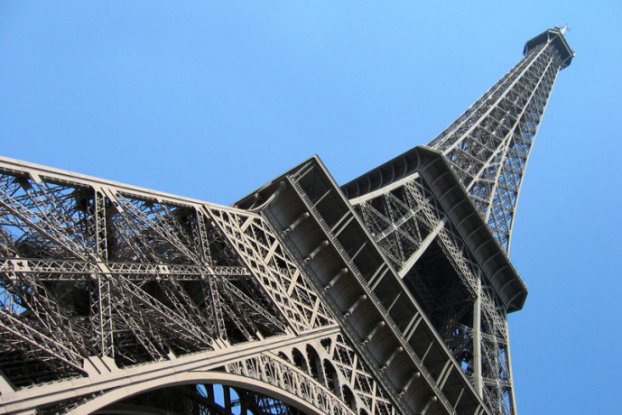
©HjalmarGerbig
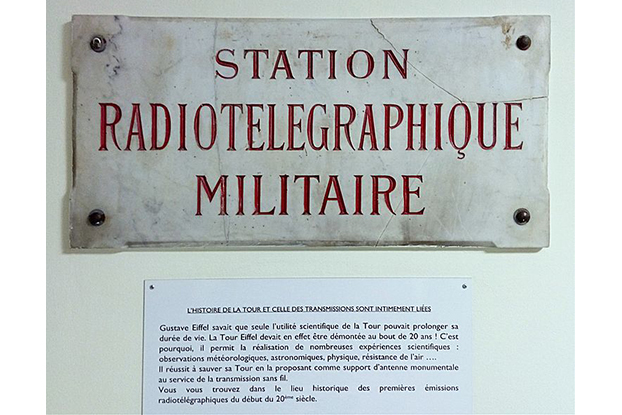
Practical information
pont d'Iena 75007
Paris
Billet d'entrée ascenseur (jusqu'au 2ème étage) : Adultes 8,50€, jeunes (12 à 24 ans) 7,00€ enfants (4 à 11 ans), handicapés 4,00€ Billet d'entrée ascenseur avec sommet Adultes : 14,00€, jeunes (12 à 24 ans) 12,50€, enfants (4 à 11 ans), handicapés 9,50€ Billet d'entrée escalier (jusqu'au 2ème étage) Adultes 5,00€, jeunes (12 à 24 ans) 3,50€, enfants (4 à 11 ans), handicapés 3,00€
Ouverture tous les jours de l'année de 9h00 à minuit du 15 juin au 1er septembre et de 9h30 à 23h le reste de l’année Week-end de Pâques et vacances de printemps : ouverture prolongée jusqu'à minuit.


